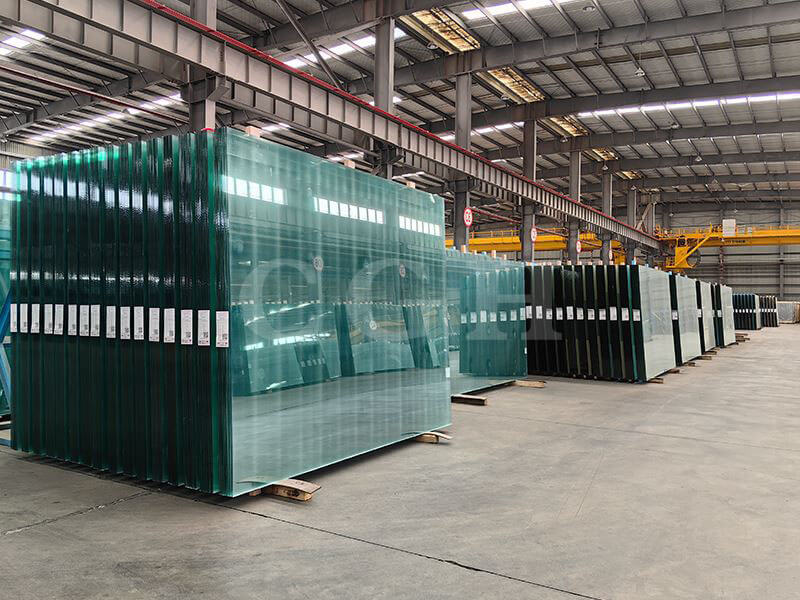Float Glass
Clear float glass is made by pouring the molten glass made by a specific proportion of quartz, soda ash and dolomite from a furnace into a chamber that contains a bed of molten tin. The combination of gravity and surface tension makes the smooth surface of the glass. Then by the roller table, the glass is moved to the lehr, where it is cooled down and cut into clear glass sheets, featured with smooth, parallel surfaces and extremely low optical distortion.
Tinted float glass, also referred to as heat-absorbing glass, is a specialized type of glass that undergoes a tinting process during production. A precise amount of colorant, usually metal oxide, is added to the glass mixture during a clear float production run, resulting in enhanced heat absorption and colorful appearance. This tinting process does not alter the fundamental properties of the glass. As the glass becomes thicker, the concentration of color increases while visible light transmittance decreases.
Low-iron glass is a type of high-quality glass that is made by removing impurities and iron from clear float glass. This process creates a glass that is crystal-clear and transparent, with over 91% light transmittance. It is also known as ultra-clear glass or “crystal prince” due to its elegant appearance.
Borosilicate glass is one kind of special float glass. The main component of high borosilicate glass is boron: 12.5-13.5%, with a silicon content of 78-80%. Therefore, the acid and alkali resistance of high borosilicate glass are very superior, with a strain temperature difference of 520°C. High-grade borosilicate glass can withstand high temperatures of 850°C and can withstand temperatures of 750°C for a long time.





